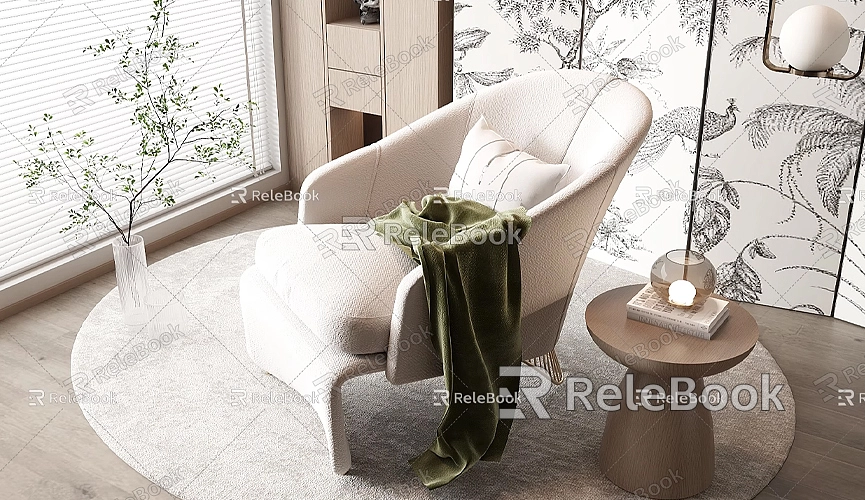How to Clean Up SketchUp Models in Blender
In the realm of 3D modeling and design, both SketchUp and Blender are popular tools. SketchUp is favored for its user-friendly interface and rapid modeling capabilities, while Blender has become the choice of many professional designers due to its powerful features and extensive toolset. Occasionally, we need to import SketchUp models into Blender for further optimization and rendering. However, during the import process, issues such as excess geometry, duplicate faces, and incorrect normal directions may arise. This article will detail how to clean up SketchUp models in Blender, making your 3D design workflow more efficient.
Why Clean Up SketchUp Models in Blender?
When importing SketchUp models into Blender, they may carry a lot of extraneous geometric information, such as duplicate lines, unnecessary details, and unoptimized materials. These issues not only complicate the model but also impact rendering speed and quality. Therefore, to ensure the model functions well in Blender and to improve the efficiency of subsequent edits, cleanup is essential.

Steps to Import SketchUp Models into Blender
Before starting the cleanup process, you first need to import the SketchUp model into Blender. Here are some common steps for importing:
1. Open SketchUp and export your model as a common 3D file format, such as `.dae`, `.obj`, or `.fbx`. These formats are well compatible with Blender.
2. Launch Blender, select “File” from the menu, and then choose the appropriate file format for import.
3. After importing the file, check how the model displays in Blender for any noticeable misalignments or missing details.
Once the import is complete, you can begin cleaning up the model.
Tips for Cleaning Up SketchUp Models in Blender
Check and Remove Duplicate Geometry
Imported models often contain duplicate geometry, which can affect the model's overall appearance and increase file size. In Blender, you can use the `Merge by Distance` feature to combine nearby vertices, eliminating duplicate lines and faces. Here's how:
- Select the model and enter “Edit Mode.”
- Select all vertices in the model (shortcut key `A`).
- In the toolbar, find the “Merge by Distance” option and adjust the distance parameter to let Blender automatically detect and merge duplicate vertices.
Fix Normal Directions
Sometimes, imported SketchUp models may exhibit incorrect normal directions in Blender, resulting in faces pointing the wrong way and causing transparency or shadow issues during rendering. You can use the “Recalculate Normals” feature in Blender to fix this:
- Enter “Edit Mode.”
- Select the faces that need fixing (or select the entire model).
- Use the shortcut key `Shift + N` to have Blender automatically recalculate the normal directions.
Optimize Polygon Structure

Due to improper detail management during creation, SketchUp models may generate an excessive number of polygons, making them cumbersome to handle in Blender. You can use the “Decimate Modifier” in Blender to optimize the polygon count:
- Select the object you need to optimize.
- In the right “Modifiers” panel, add a “Decimate Modifier.”
- Adjust the `Ratio` parameter to reduce the polygon count, being careful not to oversimplify and compromise the model's structure and details.
Clean Up Unused Materials and Textures
Imported SketchUp models often come with many unused materials and textures, which not only take up storage space but also clutter the file. In Blender, you can clear these excess materials by:
- Entering the “Material” panel to find the current model's material list.
- Reviewing and deleting unused materials one by one.
- If the model has texture maps, clean up unused textures in the “UV/Image Editor” to ensure the model file remains as clean as possible.
How to Reduce Cleanup Work in SketchUp
While models can be cleaned in Blender, developing good habits during the SketchUp modeling process can significantly reduce the amount of subsequent cleanup work:
- Avoid Overly Complex Plugins: Many plugins in SketchUp can generate complex geometries, increasing model complexity when importing into Blender. Stick to simpler geometries while modeling.
- Delete Unnecessary Lines and Faces: Clean up unused elements in SketchUp to ensure the exported file is as streamlined as possible.
- Optimize Model Grouping: Properly group different parts of the model to facilitate selection and manipulation in Blender.
Helpful Plugins for Blender
Blender has several useful plugins that can help you clean up SketchUp models more efficiently. For example:
- MeshLab: A powerful mesh processing tool that can automatically repair and optimize models.
- CleanUp: A plugin developed by the Blender community that can automatically detect and remove excess faces and lines, improving overall model quality.
High-Quality Resources from Relebook
During the model cleanup process, you may need to readjust materials and textures, making access to quality 3D resources vital. If you require high-quality 3D textures and HDRI for your models and virtual scenes, you can download them for free from [Relebook](https://textures.relebook.com). For exquisite 3D models, visit [Relebook](https://3dmodels.relebook.com), which offers a wealth of premium 3D resources.
Through this article, you should now have a solid understanding of the basic methods and techniques for cleaning up SketchUp models in Blender. After importing the model, be sure to check and fix duplicate geometries and incorrect normal directions, optimize polygon structures, and clean up unused materials and textures. Effectively using Blender's tools and plugins will help make your models cleaner and more efficient. By avoiding the generation of excessive unnecessary details and complex structures in SketchUp, you can also help reduce future cleanup tasks.
In 3D design, maintaining model simplicity and organization not only enhances rendering quality but also streamlines the entire workflow. We hope these tips help you better manage and optimize SketchUp models in Blender, bringing more convenience and creative possibilities to your projects.

